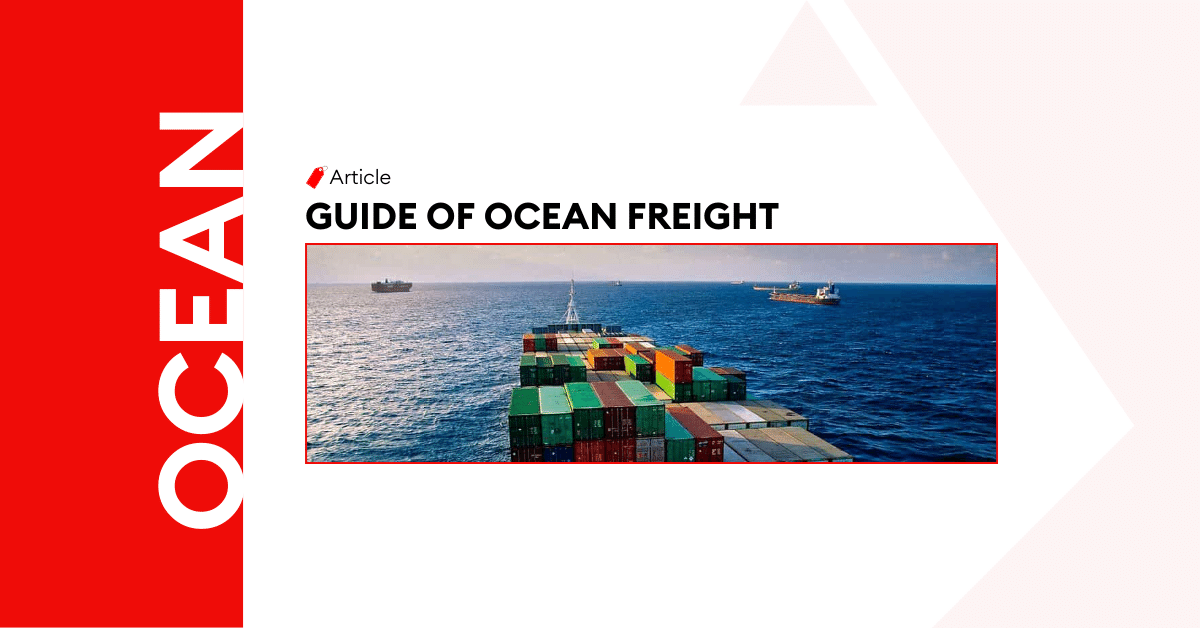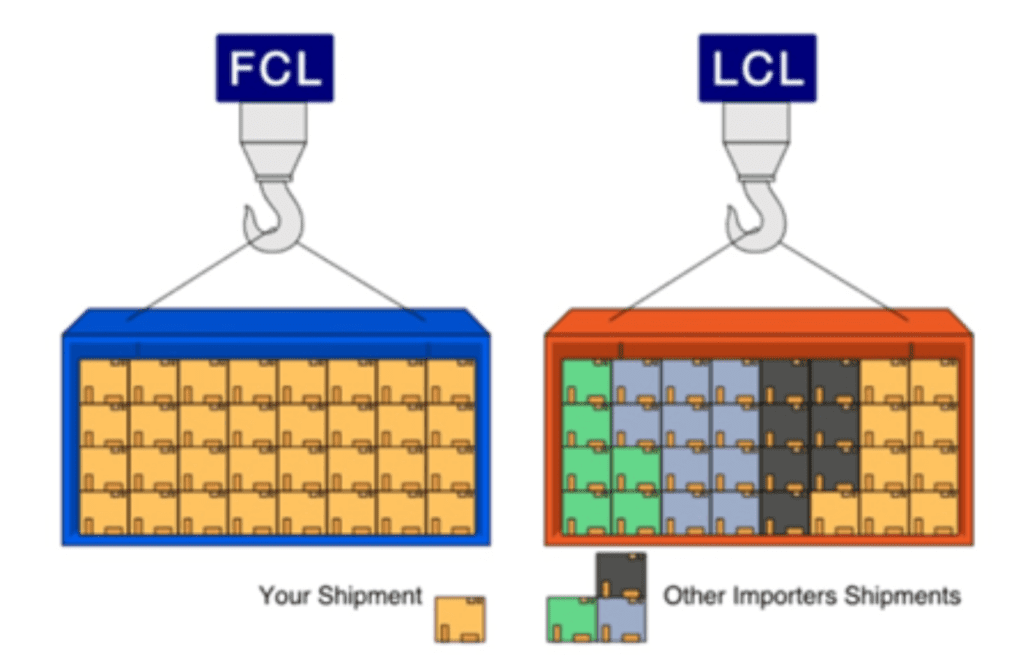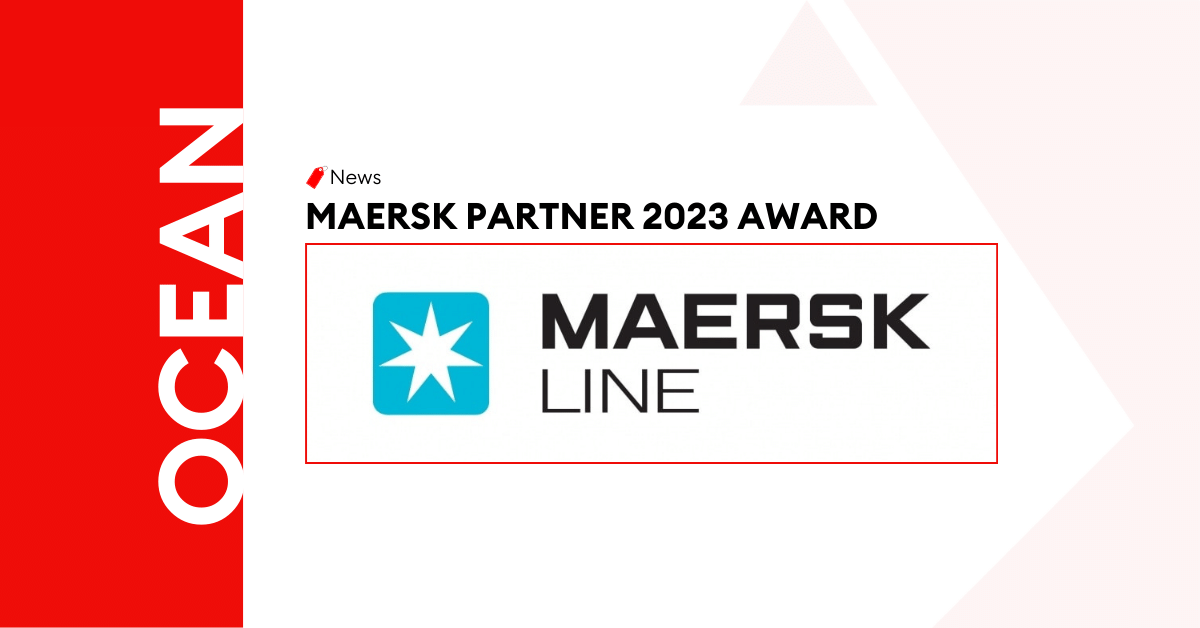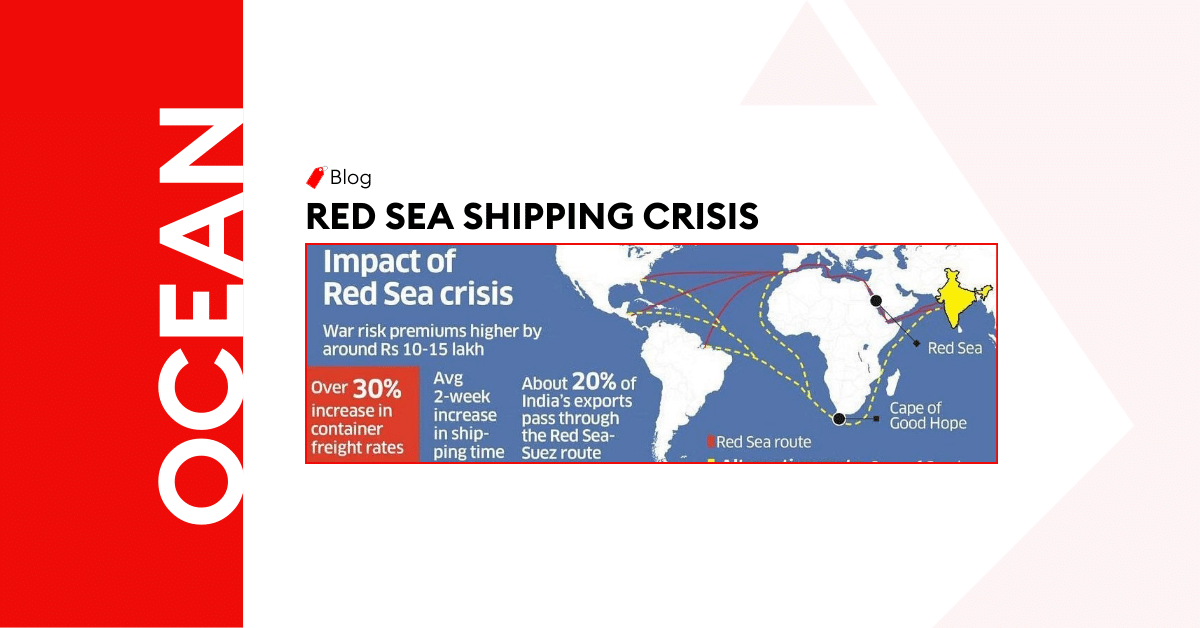
What is Ocean Freight: General Understanding of Ocean Freight
Ocean freight is a primary subject when we talk about transporting goods globally. According to UNCTAD, in 2020, this is highlighted by about 80 percent of the world’s transportation of goods occurring by sea.
In this article, we’ll discuss ocean freight, including the various ways by which goods are transported by sea.
Meaning of Ocean Freight
Also known as sea freight, it means moving goods across international borders by sea. These goods are usually packaged into large containers and loaded on shipping vessels traveling to a destination country.
Basically, ocean freight means transporting commodities through maritime channels involves moving goods and products via seas, oceans, river channels, and canals.
Among the land, air, rail, and sea means of transportation, sea freight is still the most prevalent choice used by shippers.
Why You Should Ship by Sea
As the most common means of freight, sea shipping has other notable benefits.
Big cargo capacity
One major edge of the ocean freight process is transporting shipments that are of large sizes.
These include goods measuring hundreds of kilograms ranging from large vehicles and equipment to construction materials.
Cost-effective
By far the cheapest freight option, ocean freight offers more competitive prices over long distances to shippers. Freight rates by sea are around 50 percent less than by air.
With the option to ship a wide range of cargo sizes, it’s possible to save money and increase profit margins.
Eco-friendly
Ships generally consume less fuel and emit fewer grams of exhaust gas per ton of cargo transported.
In terms of carbon footprint, other transport means produce much higher levels than sea shipping which is harmful to the environment. This implies that sea transport is the most carbon-efficient mode of freight.
Safety
Shipping crews are well equipped to handle and safely transport dangerous goods and hazardous materials. Handling and packaging of sea freight cargo is done to lessen possible harm to the onboard crew, vessel, shipment, and the environment.
All this is done while following the appropriate rules and regulations and adhering to proper safety standards.
Disadvantages of Ocean Freight
We’ve established that sea shipping is important in international trade for lot of reasons. Like, no restrictions in sea freight for some items not allowed in air freight.
Yet, this ocean shipment process has its drawbacks, such as:
Slow speed
Ships are generally slower means of transport across international borders than aircraft or land trucks. Meaning ocean freight takes weeks, unlike air freight over 2 to 3 days.
Sea shipping is not the ideal option for goods requiring a critical time period for transport and delivery.
Lack of infrastructure
Not all world areas have coastal borders or are accessible by water transport. Moreover, even in some coastline sections of the globe, there are no or inadequate port and terminal facilities.
Aside from impacting delivery, further overland transport will be needed in moving goods to the final destinations.
Risks
Longer transport times in sea shipping has risks resulting from delays and possible bad weather. Also, given that shipping routes and timetables are subject to change, it isn’t easy to track the movement of goods in transit.
In addition, ships take longer transit times and are more subject to movement, leading to possible damage or falling off of goods.
Understanding Ocean Freight by the Available Products
In ocean freight, goods are packaged into large containers before loading on a ship. This process is otherwise referred to as containerization. Containerization, or container shipment, exists in two types; FCL (or Full Container Load) and LCL (or Less than Container Load).

FCL
FCL shipping involves a shipper booking an entire container for transporting goods. All the goods in an FCL container are owned by one shipper and are called an FCL shipment, whether fully loaded or not.
An FCL, or full container, shipment may occupy a whole container or not without sharing container space with goods of other shippers.
LCL
On the other hand, an LCL shipment contains goods of multiple shippers. An LCL container usually contains small goods of importers/exporters sharing a full container space.
In the ocean freight forwarding process, a shipper’s LCL goods are consolidated or merged with LCL goods of other shippers to make up a single FCL shipment.
So, how do you choose between FCL and LCL? First, let’s consider the following factors in the table below.
FCL | LCL |
Ideal for goods occupying 6 to 12 pallets of standard 20 feet or 40 feet shipping containers | Useful for transporting small goods, i.e., merchandise taking up less than six standard pallets |
Less moving and handling of goods is involved | Possible damage to delicate or fragile goods due to frequent handling |
Goods are placed in a single container and not consolidated | No control over consolidation process or goods shipped together |
The ideal mode of moving bulky or heavy goods that require their own space, also any volume of goods | Ideal for smaller sized goods |
Freight processing is fast, so that products can be delivered within schedule | Slower processing time perfect for less time-sensitive merchandise |
The overall cost is less expensive as local charges are at a fixed rate per container | The overall cost is higher due to varying local charges above specific weights. |
Sea-Air (Multimodal)
Sea-air, or multimodal, freight is combined the transport of merchandise via sea and air. This involves sea transport of goods to an airport and transporting goods via aircraft to the final destination.
Combined sea-air freight offers faster transit times of goods relative to sea freight and lower freight cost than air freight. Other benefits include better tracking of shipments and an increased network for delivery of goods.
Ocean Freight Rates per Kilogram
When shipping large or heavy goods, it becomes ideal to choose sea freight. The general rule of thumb denotes 150 kg as the weight limit above which ocean freight should be considered.
For more competitive pricing of freight costs, it’s better to ship more goods using FCL shipping than LCL. Why? Because FCL shipment uses all the available container space and reduces costs of shipping unit goods.
However, this will determine the stocking strategy to be applied, either Just-In-Time (JIT) or Just-In-Case (JIC). Stocking strategy affects the costs of freight warehousing or storage.
JIT is shipping goods to align with when needed for production, while JIC involves shipping goods to stockpile or store up in the event of high demands.
When shipping seasonal commodities, it’s important to consider sea-air transport. This multimodal transport keeps you ahead of the freight traffic and the usual price fluctuations associated with peak season shipping.
Key Takeaway
Ocean freight is ideal for individuals and businesses seeking to move bulky and oversize goods. However, it is more relevant when you need to save on merchandise not requiring time-sensitive delivery.
With a wide delivery network and reputable shipping partners, we at Al Sharqi seek to help our customers in the most cost-effective and efficient ways possible. Visit us at www.alsharqi.co to find a service that fits your needs.
Our customer service team is happy to assist you with planing your next booking.

Related Articles
Al Sharqi Shipping and Logistics Wins Maersk Most Valuable Partner 2023 Award
Dubai, UAE – May 24, 2024 – Al Sharqi Shipping is proud to announce that it has been awarded the
Sustainability Milestone: Al Sharqi Shipping Receives 2023 Maersk ECO Delivery Certificate158
Al Sharqi named as the Maersk Line UAE Most Valuable Partner 2022 Dubai, UAE – Al Sharqi Shipping
Strategic Shifts in Maritime Trade: Responding to the Red Sea Shipping Crisis
The Red Sea, a critical maritime artery connecting Europe, Asia and North America but recently it ha







Post a comment
You must be logged in to post a comment.